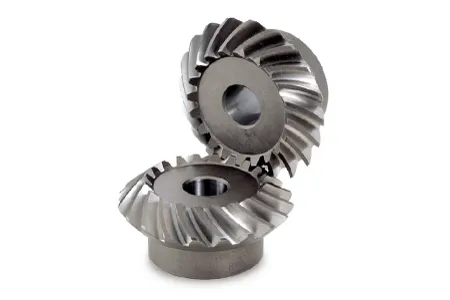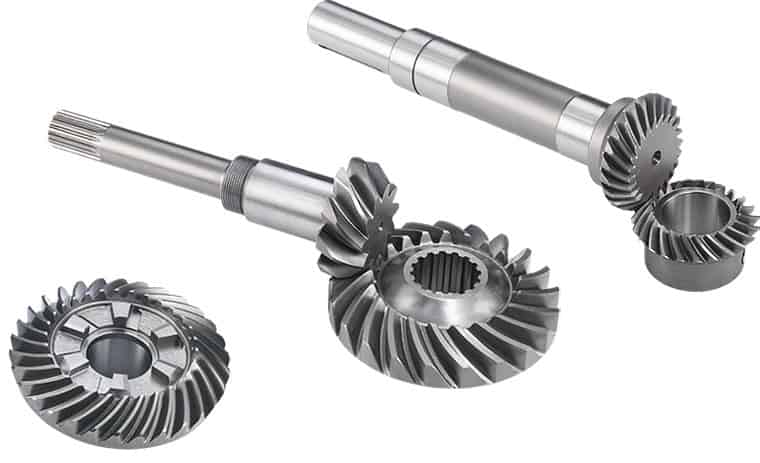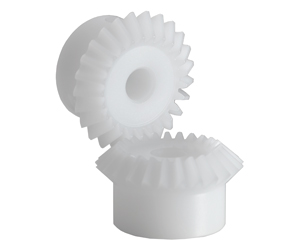Product Description
Custom Precision Auto Spare Machine Parts Die Casting Stainless Steel Straight Right Angle Miter Cold Forged Forging Spiral Zerol Helical Hypoid Bevel Gear
Product Description
We can process according to the drawings you provide
Gear processing process
1. Forging
Hot die forging is still a widely used blank forging process for automotive gear parts. In recent years, cross wedge rolling technology has been widely used in shaft machining. This technology is especially suitable for making blanks for complicated stepped shafts. It has high precision, small machining allowance and high production efficiency.
2. Normalizing
The purpose of this process is to obtain the hardness suitable for subsequent gear cutting and prepare for the final heat treatment, so as to effectively reduce the heat treatment deformation. The gear steel used is usually made of 20CrMnTi. Due to the great influence of personnel, equipment and environment, the general normalizing makes it difficult to control the cooling speed and uniformity of the workpiece, resulting in large hardness dispersion and uneven metallographic structure, which directly affects metal cutting and final heat treatment, making the thermal deformation large and irregular, and the quality of parts uncontrollable. Therefore, isothermal normalizing process is adopted. Practice has proved that the adoption of isothermal normalizing effectively changes the disadvantages of general normalizing, and the product quality is stable and reliable.
3. Turning
In order to meet the positioning requirements for high-precision gear processing, CNC lathes are used to process gear blanks, and mechanical clamping is used without regrinding the turning tool. The simultaneous processing of the hole diameter, end face and outer diameter is realized under 1 clamping, which not only ensures the perpendicularity requirements of the inner hole and end face, but also ensures the small size dispersion of large batch of gear blanks. Thus, the accuracy of gear blank is improved and the machining quality of subsequent gears is ensured. In addition, the high efficiency of CNC lathe processing also greatly reduces the number of equipment, which is economical.
4. Hobbing and gear shaping
The equipment used to process the gear is still a large number of ordinary hobbing machines and gear shapers. Although it is convenient to adjust and maintain, the production efficiency is low. If large capacity is achieved, multiple machines need to be produced at the same time. With the development of coating technology, the re coating of hobs and slotting tools after grinding is very convenient. The coated tools can significantly improve their service life, generally by more than 90%, effectively reducing the number of tool changes and grinding time, with significant benefits.
5. Shaving
radial shaving technology is widely used in the production of large quantities of automobile gears because of its high efficiency and the easy realization of the requirements for the modification of the designed tooth profile and tooth direction. Since the company purchased the special radial shaving machine of Italian company through technical transformation in 1995, the technology has been applied maturely and the processing quality is stable and reliable.
6. Heat treatment
Automobile gears require carburizing and quenching to ensure their good mechanical properties. Stable and reliable heat treatment equipment is essential for products that are no longer subject to gear grinding after heat treatment. The company has introduced the continuous carburizing and quenching production line of German Louyi Company, and has obtained satisfactory heat treatment effect.
7. Grinding
It is mainly used to finish the inner hole, end face, shaft outer diameter and other parts of the gear after heat treatment to improve the dimensional accuracy and reduce the form and location tolerance.
Related products
Transmission parts
Gearbox / Speed reducer
Company Profile
Our company has perfect management system and complete detection means, including physical and chemical laboratory, spectrometer, ultrasonic flaw detector and magnetic particle flaw detector, tensile testing machine, Brinell hardness tester, CMM and other detection equipment. The forging processing equipment is complete, including 2 2500T and 4000T press forging production lines; Machining equipment includes: machining center, CNC lathe, CNC gear shaper, milling machine, drilling machine, planer and other processing equipment of more than 60 sets. Heat treatment equipment: 6 box type electric furnaces; The heating equipment includes 3 medium frequency induction furnaces and 3 natural gas heaters. The excellent quality, excellent service and mutual cooperation make our customers all over the world and get good comments from users.
The main products are forged parts within 200kg in engineering machinery, new energy equipment, mining machinery, agricultural machinery, petroleum machinery, heavy trucks and other fields. It produces and sells gear box forgings, hydraulic cylinder forgings, reducer forgings, forging processing, gear ring forging, wheel forging, hook forging and other products. It is a CHINAMFG forging manufacturer and die forging manufacturer in the industry.
| Application: | Motor, Electric Cars, Motorcycle, Machinery, Marine, Toy, Agricultural Machinery, Car |
|---|---|
| Hardness: | Hardened Tooth Surface |
| Gear Position: | Internal Gear |
| Manufacturing Method: | Cast Gear |
| Toothed Portion Shape: | Bevel Wheel |
| Material: | Stainless Steel |
| Samples: |
US$ 9999/Piece
1 Piece(Min.Order) | |
|---|
How do miter gears handle changes in direction and torque transmission?
Miter gears are specifically designed to handle changes in direction and torque transmission efficiently. Here’s an explanation of how they accomplish this:
1. Right Angle Transmission:
Miter gears are primarily used to transmit rotational motion at a 90-degree angle. When two miter gears with intersecting shafts are meshed together, they allow the input and output shafts to be positioned perpendicular to each other. This right angle transmission capability enables changes in direction within a compact space.
2. Interlocking Tooth Design:
Miter gears have teeth that are cut at a specific angle to match the gear’s cone shape. When two miter gears mesh, their teeth interlock and transfer torque between the gears. The interlocking tooth design ensures a smooth and efficient torque transmission, minimizing power loss and maximizing mechanical efficiency.
3. Bevel Gear Configuration:
Miter gears belong to the bevel gear family, which includes straight bevel gears and spiral bevel gears. Straight bevel gears have straight-cut teeth and are suitable for applications with moderate torque and speed requirements. Spiral bevel gears have curved teeth that gradually engage, providing higher torque capacity and smoother operation. The choice between straight and spiral bevel gears depends on the specific application’s torque and performance requirements.
4. Meshing Alignment:
Proper alignment of miter gears is crucial for efficient torque transmission and smooth operation. The gears must be precisely positioned and aligned to ensure accurate meshing of the teeth. This alignment is typically achieved using precision machining and assembly techniques to maintain the desired gear contact pattern and tooth engagement.
5. Load Distribution:
When torque is transmitted through miter gears, the load is distributed across multiple teeth rather than concentrated on a single tooth. This load distribution helps to minimize tooth wear, reduce stress concentrations, and increase the overall load-carrying capacity of the gears.
6. Lubrication:
Proper lubrication is essential for the smooth operation and longevity of miter gears. Lubricants reduce friction and wear between the gear teeth, ensuring efficient torque transmission and minimizing heat generation. The type and method of lubrication depend on the specific application and operating conditions.
7. Backlash Control:
Backlash refers to the slight clearance between the mating teeth of gears. Miter gears can be designed with specific tooth profiles and manufacturing techniques to control backlash and minimize any unwanted movement or play. This helps maintain accuracy and precision in direction and torque transmission.
In summary, miter gears handle changes in direction and torque transmission through their right angle transmission capability, interlocking tooth design, bevel gear configuration, precise meshing alignment, load distribution across teeth, proper lubrication, and backlash control. These features make miter gears an effective choice for applications that require efficient and reliable direction and torque transmission.
What are the variations in miter gear designs and configurations?
Miter gears come in various designs and configurations to suit different application requirements. Here are some common variations:
1. Straight Bevel Gears:
Straight bevel gears are the most basic type of miter gears. They have straight teeth that are cut along the cone surface. Straight bevel gears are widely used and offer efficient power transmission, but they generate more noise and vibration compared to other designs.
2. Spiral Bevel Gears:
Spiral bevel gears have curved teeth that are cut in a spiral pattern along the cone surface. This design helps to reduce noise and vibration, improves load distribution, and provides smoother operation compared to straight bevel gears. Spiral bevel gears are commonly used in high-performance applications.
3. Zerol Bevel Gears:
Zerol bevel gears are similar to spiral bevel gears but have curved teeth with a spiral angle of zero degrees. This results in the teeth being parallel to the gear axis at the point of contact. Zerol bevel gears offer advantages such as reduced tooth thrust, improved tooth strength, and smoother meshing compared to other designs.
4. Hypoid Gears:
Hypoid gears are a variation of miter gears that have non-intersecting and offset axes. The axes of the gears do not intersect but are positioned at an angle to each other. Hypoid gears are commonly used in applications where high torque transmission is required, such as automotive differentials.
5. Skew Bevel Gears:
Skew bevel gears have teeth that are cut at an angle to the gear axis, resulting in a skewed or helical appearance. This design reduces noise, increases tooth contact area, and improves load distribution. Skew bevel gears are often used in applications where smooth and quiet operation is critical.
6. Offset Miter Gears:
Offset miter gears are used when the input and output shafts need to be offset from each other. They have specific tooth profiles to accommodate the offset arrangement while maintaining proper meshing and transmission of rotational motion. Offset miter gears are commonly found in machinery where space constraints or specific design requirements exist.
7. Customized Designs:
In addition to these variations, miter gears can be customized to meet specific application needs. This may involve modifications to the tooth profile, pitch angle, tooth size, or other parameters to optimize gear performance for a particular use case.
In summary, miter gears offer various design and configuration variations, including straight bevel gears, spiral bevel gears, zerol bevel gears, hypoid gears, skew bevel gears, offset miter gears, and customized designs. Each variation has unique characteristics that make it suitable for different applications, allowing for flexibility and adaptability in gear system design.
What are the advantages of using miter gears in machinery?
Miter gears offer several advantages when used in machinery. Here’s a detailed explanation of their advantages:
1. Right Angle Power Transmission:
One of the primary advantages of miter gears is their ability to transmit power between intersecting shafts at a right angle. This allows for efficient power transfer in machinery where the input and output shafts need to be oriented perpendicularly. Miter gears eliminate the need for additional components or complex mechanisms to achieve this right angle power transmission.
2. Compact Design:
Miter gears have a compact design due to their conical shape and intersecting shaft arrangement. They occupy less space compared to other types of gears used for parallel or non-intersecting shafts. This compactness is particularly beneficial in machinery where space constraints are a concern, allowing for more efficient utilization of available space.
3. Directional Change of Rotation:
Miter gears enable the change in the direction of rotational motion. By meshing two miter gears, the input rotational motion can be redirected at a 90-degree angle. This flexibility in changing the direction of rotation is advantageous in machinery that requires precise control over the direction of movement or where space limitations restrict the orientation of the equipment.
4. Speed Adjustment:
Miter gears can be used to achieve speed reduction or increase by varying the number of teeth on the gears or combining them with other gears. This allows for adjusting the rotational speed to match the desired output speed. The ability to change the speed with miter gears provides flexibility in adapting the machinery to specific operational requirements.
5. Smooth Operation:
When designed and manufactured with precision, miter gears can provide smooth and efficient operation. Proper tooth profile and tooth contact ensure minimal noise and vibration during gear engagement, resulting in quieter and more reliable machinery performance.
6. Versatility:
Miter gears are versatile and find applications in a wide range of machinery across various industries. They can be employed in different types of equipment, including mechanical clocks, robotics, printing machinery, automotive differentials, camera lenses, and more. The versatility of miter gears makes them a valuable choice for different machinery requirements.
7. High Torque Transmission:
Miter gears are capable of transmitting high torque due to their robust construction and tooth engagement characteristics. This makes them suitable for machinery that requires the transmission of substantial power or torque, ensuring reliable operation even under demanding conditions.
In summary, the advantages of using miter gears in machinery include right angle power transmission, compact design, directional change of rotation, speed adjustment, smooth operation, versatility, and high torque transmission. These advantages make miter gears a preferred choice in various machinery applications, offering efficiency, flexibility, and reliable performance.
editor by CX 2023-12-04




